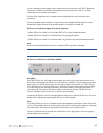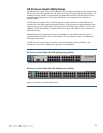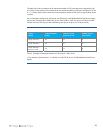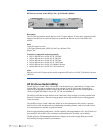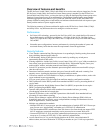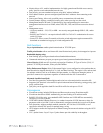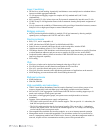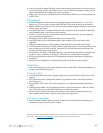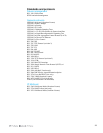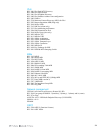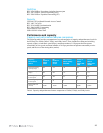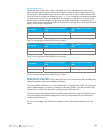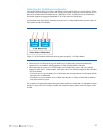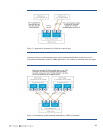
31
Layer 2 switching
• HP ProCurve switch meshing: dynamically load-balances across multiple active redundant links to
increase available aggregate bandwidth
• VLAN support and tagging: support for complete 802.1Q standard and 2,048 VLANs
simultaneously
• 802.1v protocol VLANs: isolate select non-IPv4 protocols automatically into their own VLANs
• GVRP: Group VLAN Registration Protocol allows automatic learning and dynamic assignment of
VLANs
• Q-in-Q: increases the scalability of Ethernet network by providing a hierarchical structure; connects
multiple LANs on high-speed campus or metro Ethernet network
Bridging protocols
• MSTP: provides high link availability in multiple VLAN environments by allowing multiple
spanning trees; encompasses 802.1D STP and 802.1w RSTP
Routing protocols
• RIP (v1, v2, and v1-compatible v2)
• OSPF with host-based ECMP (Equal Cost Multi-Path) and NSSA
• Static IP route: to manually add routes directly to the routing table; includes ECMP
• 10,000 network address routes, 65,536 L3 host address routes
• UDP helper function: UDP broadcasts can be directed across router interfaces to specific IP unicast
or subnet broadcast addresses and prevent server spoofing for UDP services such as DHCP
• Loopback interface address: defines an interface in RIP and OSPF that can always be reachable,
improving diagnostic capability
• IPv4 routing
IPv6
• IPv6 host: switches can be deployed and managed at the edge of IPv6 LAN
• IPv4/IPv6 Dual Stack: provides transition mechanism for IPv4 and IPv6
• IPv6 ACL: provides control and security in an IPv6 network
• IPv6 QoS: prioritizes network traffic and enhance performance of applications on the network
• MLD Snooping: prevents multicast traffic from flooding the network
Multicast protocols
• IGMP data-driven
• PIM-SM, PIM-DM
High availability and redundancy
• VRRP: Virtual Router Redundancy Protocol (requires Premium License) allows groups of two
routers to dynamically back each other up to create highly available routed environments
• 802.3ad LACP: Link Aggregation Control Protocol and HP ProCurve trunking support up to 36
trunks, each with up to 8 links (ports) per trunk
• Port trunks, or link aggregation groups, can operate across multiple modules to increase
redundancy.
• Supports various redundant power supply configurations:
– The 5406zl switch provides slots for two internal supplies. This can provide 1+1 redundancy for
both PoE and system power needs.
– The 5412zl switch provides slots for four internal supplies. This can provide 1+1 redundancy
similar to the 5406zl switch. You can use the internal supplies for 1+1 backup; two backing up
two for both PoE and system power needs.
• Hot-swappable/Hot-insertable line interface modules, so as not to interrupt network operation
• Management module is removable/upgradable: The switch does not have to be powered off to
remove a management module from a 5400zl series. However, when the management module is
removed, all ports will lose communication and the system will be powered down.



